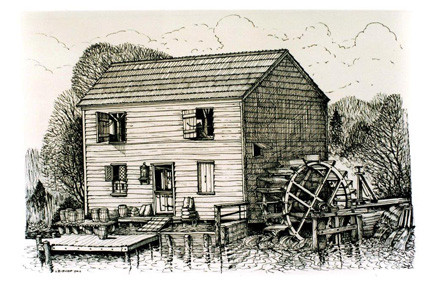The Grist Mill begins
Historical Society of East Rockaway and Lynbrook: History bits and pieces
Today most people go to the store and purchase flour or bread and don’t usually give much thought to what actually occurred to produce those goods. However, 325 years ago, the process of turning wheat into its many products was an important part of daily life.
Back then, much of the wheat was ground into flour at a grist mill, and East Rockaway was fortunate enough to have one in its own backyard.
The East Rockaway Grist Mill can trace its history to a Town of Hempstead meeting held on December 28, 1688 at which the Town granted Joseph Haviland the right to construct a mill. That permission was worded this way:
Joseph heviland [sic] shall have Liberty to Sett [sic] a Grist mill upon ye streame of ye Rockaway Swampe and to have Six acors[sic] of Land by it upon ye following Conditions: to macke [sic] and Sett up Compleat [sic] a good grist mill within one yeare… and to grind ye townes Corne for the twelfth part therof and if ye Said mill Shall… Ly[sic] uncapable to grind one yeare ... then ye sd streame and Land is to Reterne [sic] to ye towne againe.
Haviland apparently understood the profitability of locating a mill at this location to help create a shipping and trading center. Before this, milling had been done at Foster’s Meadow (now Elmont) and required the shipment of flour to New York City along the old Hempstead Turnpike.
And the rest as they say “is history.” The Haviland-Davison Grist Mill is now celebrating its 325th birthday, and the mill’s existence becomes even more historically significant when one realizes that its construction date in 1689 corresponds to the original settlement of East Rockaway. With the aforementioned Town resolution, the Grist Mill construction began in 1689 and the Haviland mill flourished, becoming the center of economic, social and cultural life for the next 150 years. Stay tuned.
Source: HSERL Archives and National Register of Historic Places Zachary Studenroth.






